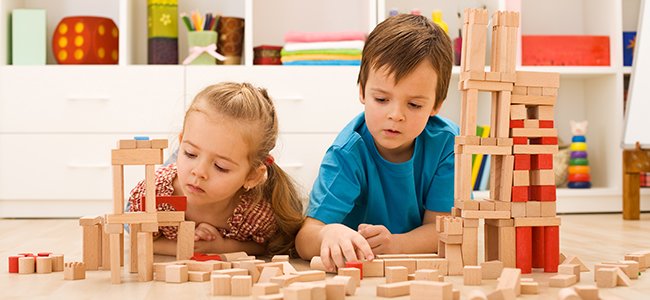The Montessori method is focused on promoting the spontaneity and autonomy of the pupils, giving them the freedom to develop within a specially prepared environment, an aspect which therefore also favours the self-development of the pupils.
What is the Montessori method?
It is an open education method created by Maria Montessori, who believed that pupils “are the ones who have to describe the very laws of education“, since “the pupils’ best teachers are themselves“.
Its pedagogy considers that the first years of children’s lives are critical for their development, as this is when they develop a large part of their capacities. That is why the Montessori method emphasises the infant stage, and focuses on the principle that children should be free to learn and develop on their own, in an environment of understanding and affection that is stimulating.
A very relevant aspect of the Montessori method is the fact that it is recommended that classrooms contain pupils of different ages, divided by age groups because of the specificities of development in each period. Generally the separation is done in groups of 3 years (e.g. from 6 to 9).
In this way, the younger children learn by watching the older children and, in turn, the older children benefit from helping the younger children. The mixed age group allows children to develop socially, intellectually and emotionally.

What does it consist of?
- It is characterised by independence, freedom with limits and respect for the physical and social development of the pupils, key elements in this method.
- It recognises the importance of activity directed by the pupils and observation by the adult; the child is the one who chooses the activity to be carried out, it is completely free, we simply need a prepared environment and specific materials.
- Pupils develop through free work with didactic materials.
- The aim of this method is to develop the potential of the pupils through a prepared environment: tidy, aesthetic, simple, real, where each element has its reason for being in the development of the children.

How should the space where we work look like?
The prepared environment consists specially of specific furniture, which must be adapted and within the reach of the pupils, so that they can use it on their own without the help of an adult.
The prepared environment is aimed at developing the students’ potential and their learning, doing it at their own pace and with full freedom to choose what they want to do at any given moment. To this end, this environment must be:
- Orderly, children need an orderly environment with routines, as their brains need it. In this way, we minimise possible frustrations, stressful situations or anger as much as possible.
- Nice and clean, we must create an environment where everything is in perfect condition, i.e. there are no broken objects and, in turn, everything must be clean, so they will try to keep it that way.
- Structured, depending on the age of the pupils and their stage of development, this will affect the appearance of the space in which they have to work.
- Freedom of movement, so that everything the pupils need is within their reach and they can move freely around the space.
- Reality, i.e. all objects in the environment must be real. For example, pupils should use glass, and when something is dangerous, it should always be used under adult supervision.
- Nature, pupils should begin by learning in nature, so that they develop an appreciation for the living things around them. This is why we recommend the use of school gardens, nature excursions, projects, etc.
- Quiet environment, so that students will work in a relaxed way and the results will be more optimal.

How can we work this method at home?
Bearing in mind that one of the fundamental aspects of the Montessori method is the independence of the pupils, at home, we can adapt the space to facilitate the acquisition of skills in a gradual way in order to achieve this degree of independence. We must seek to provide them with opportunities to choose, act, think and express themselves without obligation or domination.
In order to achieve this objective, we must follow the guidelines of the Montessori method, that is to say, we must apply the fundamental principles: order, aesthetics, interest and objective. It is recommended that parents prepare the environment, taking into account the real needs of the child and allowing them to be autonomous, participate in cooking, cleaning, take responsibility for their own things, and carry out activities at their own pace.
It is important to give our child the responsibility to make a real and relevant decision, so that they gain autonomy and learn the values of responsibility. In short, we must comply with the following points:
- a prepared environment
- a trained adult
- social support



